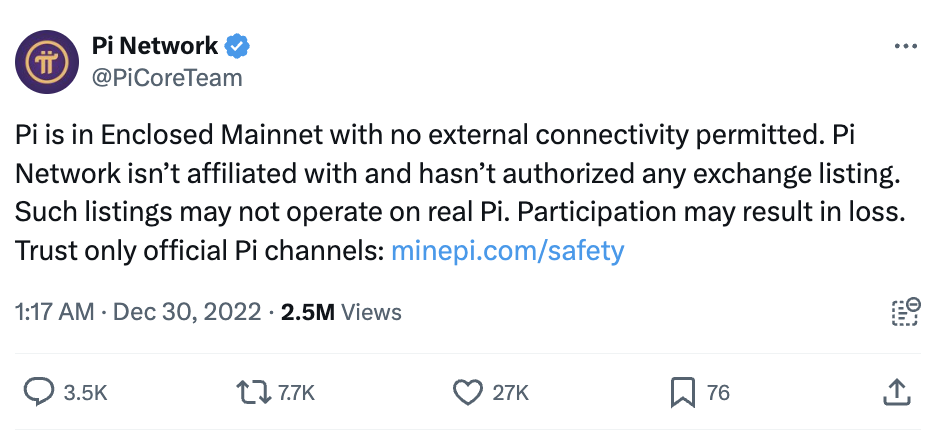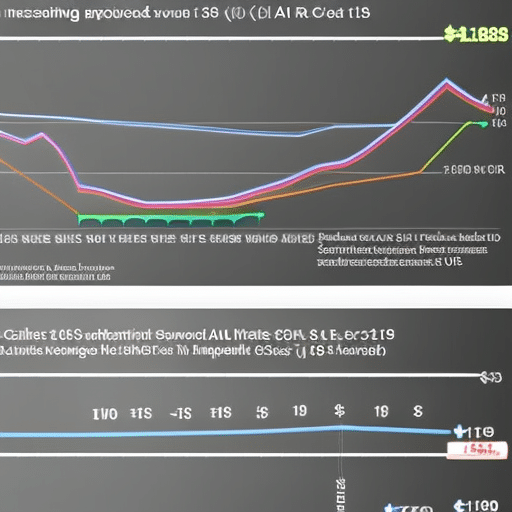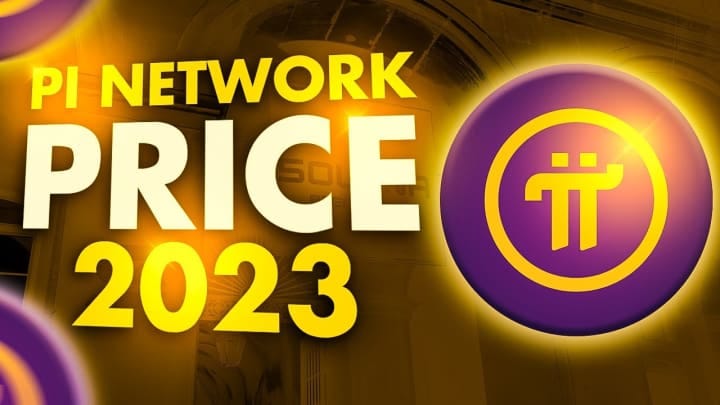Why Some People Call Pi Network A Scam & Why Others Disagree

Executive Summary

The Pi Network, a cryptocurrency mined through a mobile app, is a subject of intense debate. While some dismiss it as a scam due to its low barrier to entry and perceived lack of real-world value, others see it as a pioneering project with the potential for future growth. This article explores both sides of the argument, examining the criticisms and counterarguments surrounding Pi Network’s legitimacy and potential. We delve into the technology, economics, and community aspects to provide a balanced perspective and help you form your own informed opinion. This isn’t financial advice; any investment carries risk, and thorough research is crucial before participation.

Introduction
Pi Network, a cryptocurrency project accessible through a smartphone app, has attracted millions of users worldwide. Its ease of mining, requiring only minimal effort, has also drawn considerable skepticism. While the project boasts a large community and ambitious goals, concerns about its value, security, and overall viability persist. This article aims to dissect these concerns, presenting both the criticisms and the reasons why many believe Pi Network has merit. We’ll examine the key elements of the project to offer a comprehensive understanding of the ongoing debate.
Frequently Asked Questions (FAQs)
-
Q: Is Pi Network a legitimate cryptocurrency? A: Whether Pi Network is “legitimate” is a matter of ongoing debate. It’s not yet tradable on major exchanges, and its future value is uncertain. However, it has a large and active community, ongoing development, and a functioning, albeit unique, mining system. Consider this a high-risk venture.
-
Q: How can I mine Pi? A: Mining Pi is remarkably easy; you download the app, verify your identity, and tap a button once a day. This “mining” is significantly different from traditional cryptocurrency mining. It leverages the network’s community and consensus mechanisms, rather than computationally intensive processes.
-
Q: When can I sell my Pi? A: Currently, Pi is not tradable on major exchanges. The Pi Network team plans to introduce a Mainnet (a fully functional, independent blockchain) eventually, which will allow for trading. The exact timing of this remains unclear.
The Technology Behind Pi Network
Pi Network’s technology utilizes a Stellar Consensus Protocol (SCP), a variation of a distributed ledger technology (DLT). Unlike Bitcoin’s energy-intensive proof-of-work system, Pi Network aims for energy efficiency. This is a key argument used by supporters to counter the “scam” accusations. However, critics point out that the simplified mining process raises concerns about the network’s security and scalability.
- Stellar Consensus Protocol: Pi leverages a modified version of SCP, aiming for efficient consensus without the need for high computational power. This makes it accessible to a wider audience but could potentially compromise security.
- Mobile-First Approach: The app-based mining is a central feature, aiming for broader accessibility but sacrificing some security measures found in traditional mining setups.
- Mainnet Transition: The transition to the Mainnet is crucial. It will determine whether Pi Network can successfully become a fully functional cryptocurrency, independent from its current testing phase.
- Security Concerns: The simplified mining process raises questions about the network’s vulnerability to attacks, particularly those targeting the mobile app.
- Scalability Challenges: The ability of the network to handle a large number of transactions efficiently remains a question mark. Its current architecture might not scale easily as more users join.
- Transparency: The level of transparency regarding the project’s inner workings and future roadmap is crucial to build trust.
The Economics of Pi Network
The economic model of Pi Network is unique and a significant source of contention. The unlimited supply of Pi, at least during the mining phase, contrasts sharply with the scarcity model of Bitcoin. While proponents argue that the controlled release and future utility will manage inflation, skeptics see it as a potential devaluing factor. The project’s plans for future applications and integration with the real economy are crucial for establishing value.
- Unlimited Supply (Initially): Pi’s potentially unlimited supply during the mining phase raises serious concerns about its long-term value and inflation.
- Controlled Release: The phased release and future control mechanisms aimed at managing Pi’s supply are meant to mitigate the issues of unlimited supply.
- Ecosystem Development: The successful development of a thriving ecosystem with real-world applications is pivotal in determining Pi’s value.
- Future Utility: Pi’s long-term value will depend heavily on whether it can find real-world applications and integration into existing systems.
- Adoption Rate: The rate at which the Pi Network is adopted by businesses and users will be a major factor in its price and success.
- Mainnet Launch and Exchange Listing: The launching of a mainnet and listing on established exchanges will be pivotal for its price discovery and liquidity.
The Pi Network Community
Pi Network’s strength arguably lies in its large and active community. This vast network of users actively participates in mining, development, and promotion, fostering a sense of shared ownership. However, this community is also a source of both support and skepticism. The community’s size and enthusiasm are often touted as positive indicators, while its largely unregulated nature is a point of concern for critics.
- Large and Active Community: A large community is a key strength, providing support and driving development.
- Community Governance: The degree of community participation in governance and decision-making is a crucial factor for future success.
- Community Engagement: The level of community engagement in shaping the future of the network is a positive signal, but requires careful monitoring.
- Potential for Manipulation: The size of the community, while beneficial, also raises concerns about the potential for manipulation and the spread of misinformation.
- Decentralization Efforts: The extent to which the network can achieve genuine decentralization will be crucial for its long-term viability.
- Community-Driven Development: The active participation of the community in the development process can be a strength, but requires transparency and robust mechanisms to prevent abuse.
The Criticism and Counterarguments
The primary criticisms against Pi Network revolve around its perceived lack of real-world value, its easily accessible mining process, and uncertainties surrounding its future. Critics often point to its similarities to pyramid schemes or pump-and-dump operations. However, supporters emphasize the project’s innovative technology, community-driven development, and potential for future integration into real-world applications. They see it as an ambitious project still in its early stages.
- Comparison to Pyramid Schemes: The easy access to Pi mining has led to comparisons with pyramid schemes, a criticism that the project team consistently attempts to refute.
- Lack of Current Tradability: The inability to currently trade Pi on major exchanges is a major drawback and fuel for skepticism.
- Potential for Manipulation: Concerns exist regarding the potential for market manipulation once Pi becomes tradable.
- Uncertain Future Value: The uncertainty around Pi’s future value is a significant risk for potential users.
- Over-reliance on Community Growth: The success of Pi Network appears significantly reliant on continued community growth, which is not a sustainable model.
- Technological Limitations: Some critics point to the potential limitations of the Stellar Consensus Protocol for a large-scale cryptocurrency.
Conclusion
The debate surrounding Pi Network’s legitimacy is complex and multifaceted. While legitimate concerns regarding its value, security, and overall viability exist, it’s crucial to consider the arguments put forth by its supporters. The project’s success hinges on successfully navigating the transition to Mainnet, establishing real-world utility, and maintaining the trust and participation of its large community. It remains a high-risk investment, and thorough due diligence is crucial before participating. Remember, this isn’t financial advice; always conduct your own research.
Keyword Tags
Pi Network, Cryptocurrency, Mining, Stellar Consensus Protocol, Blockchain


